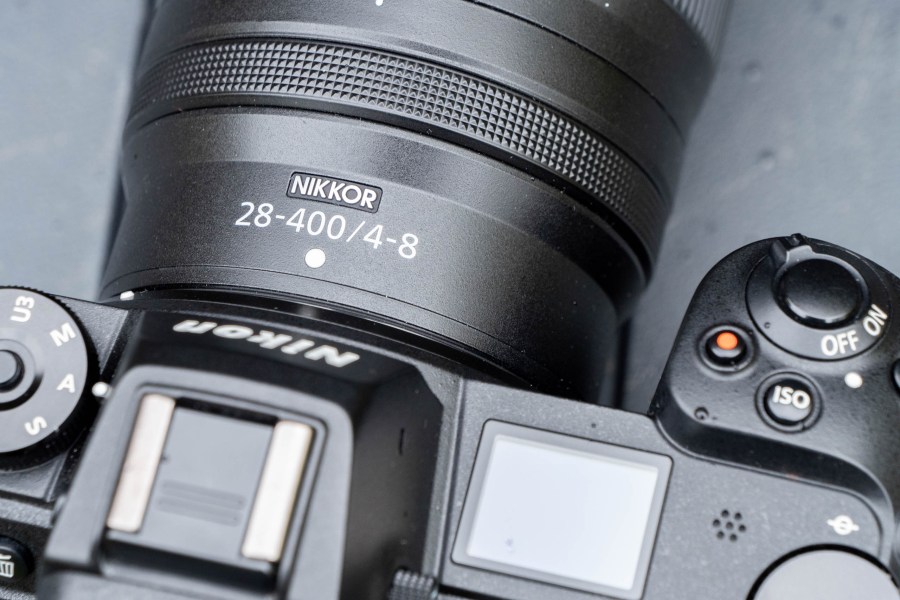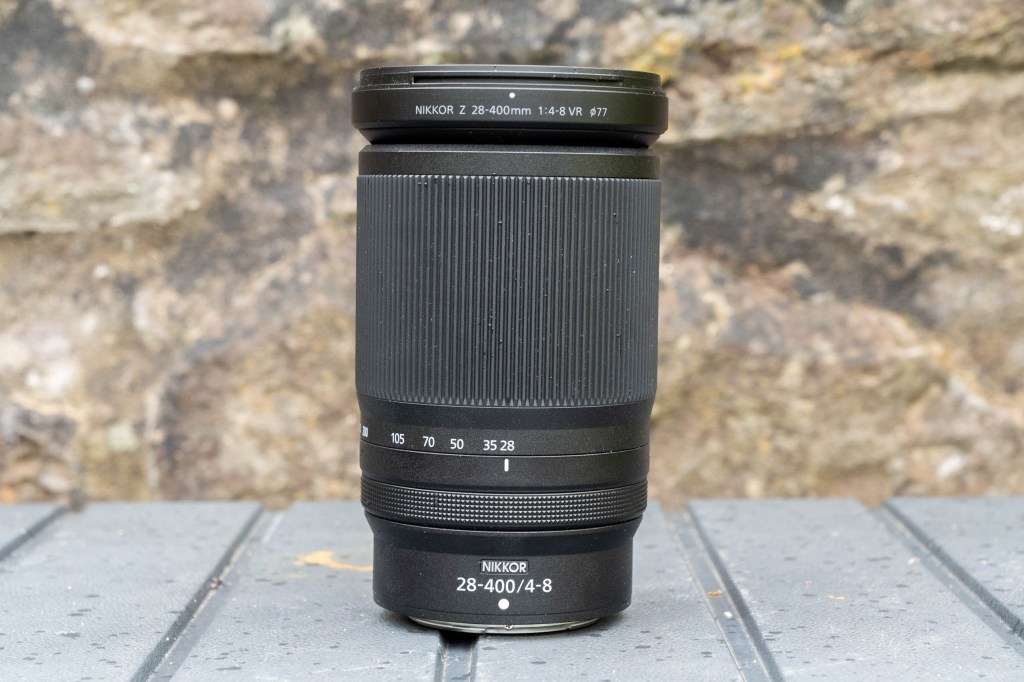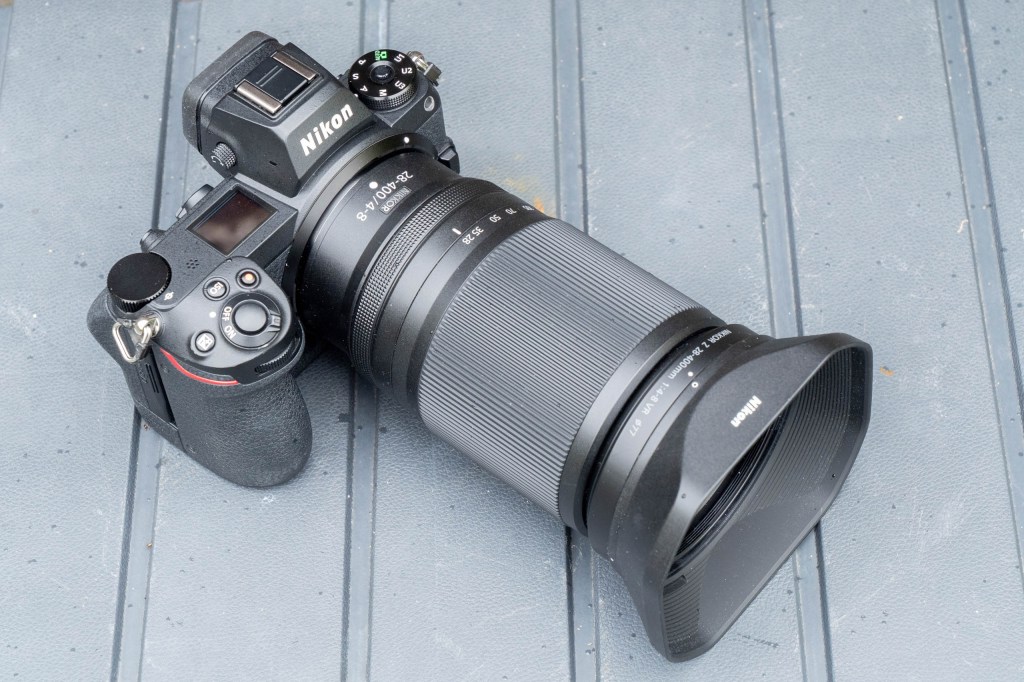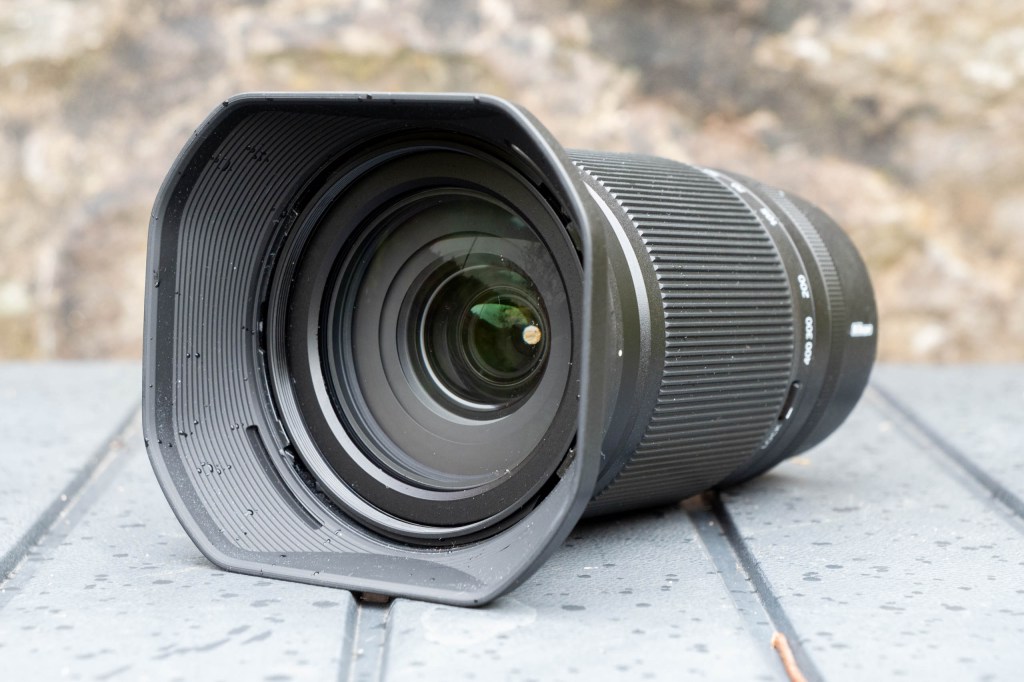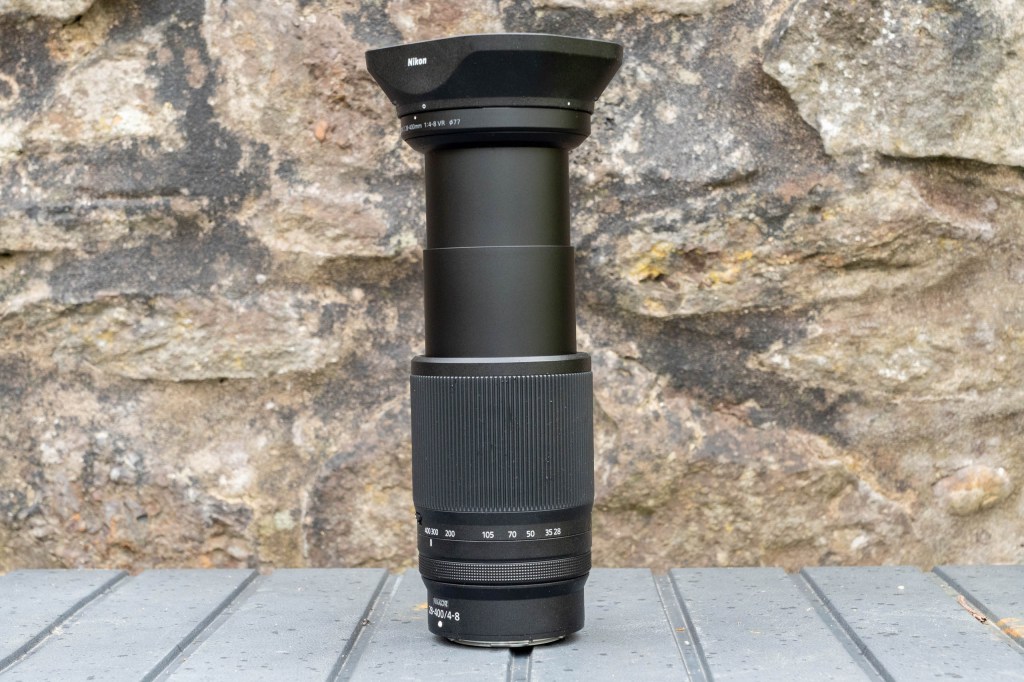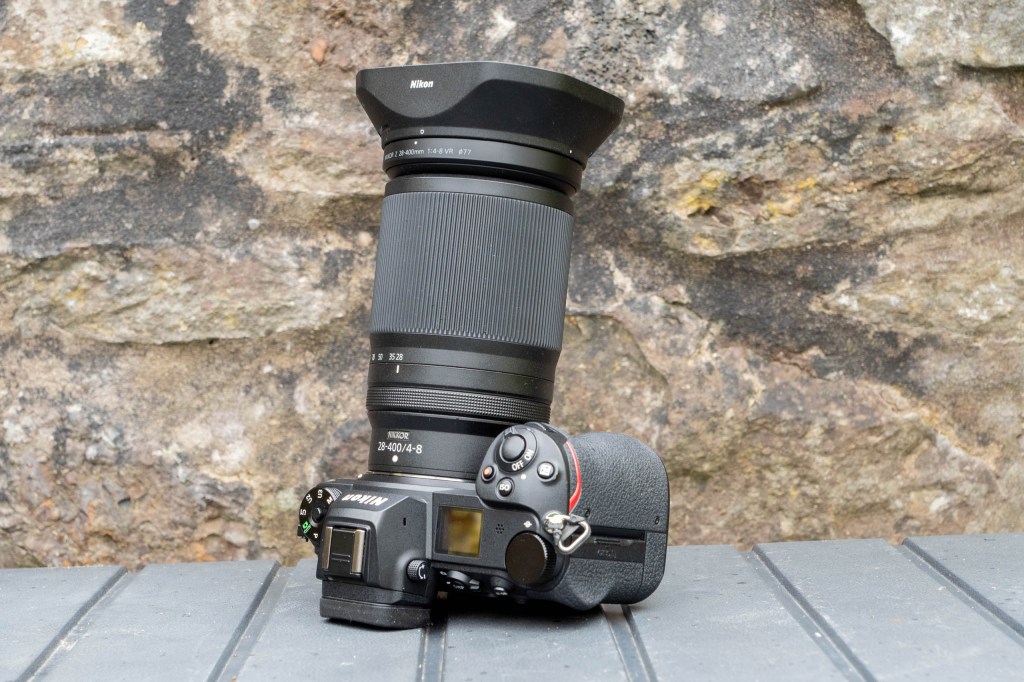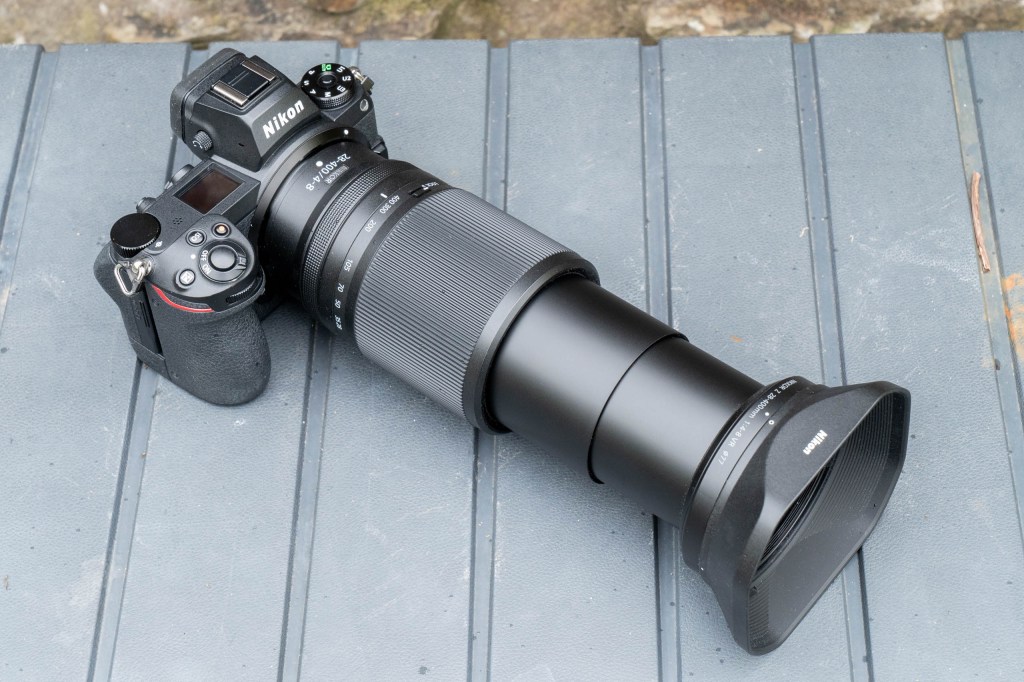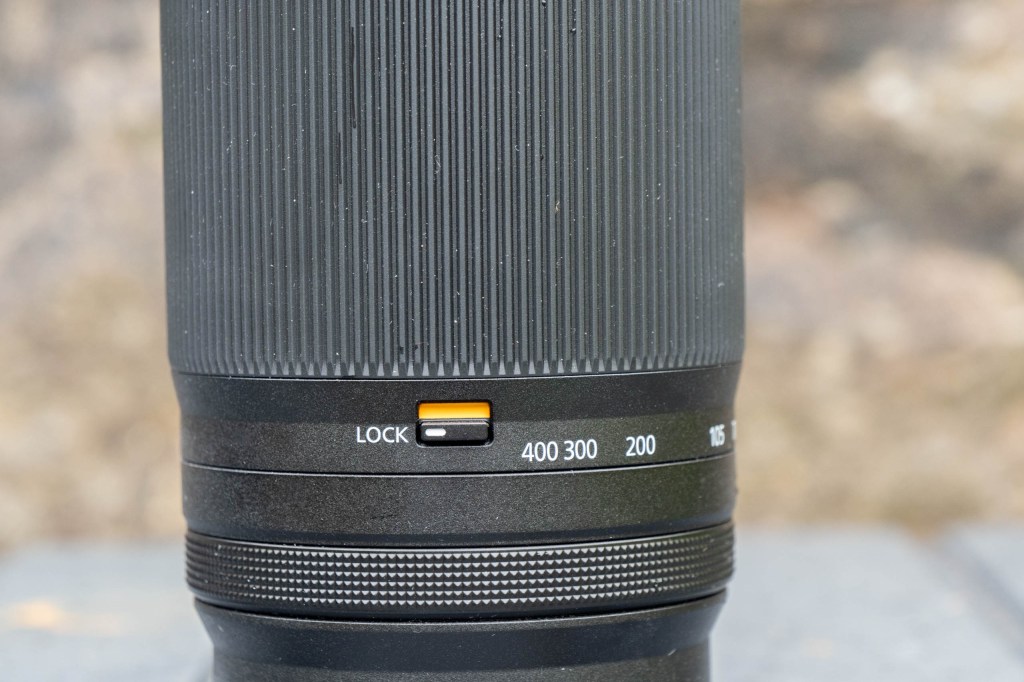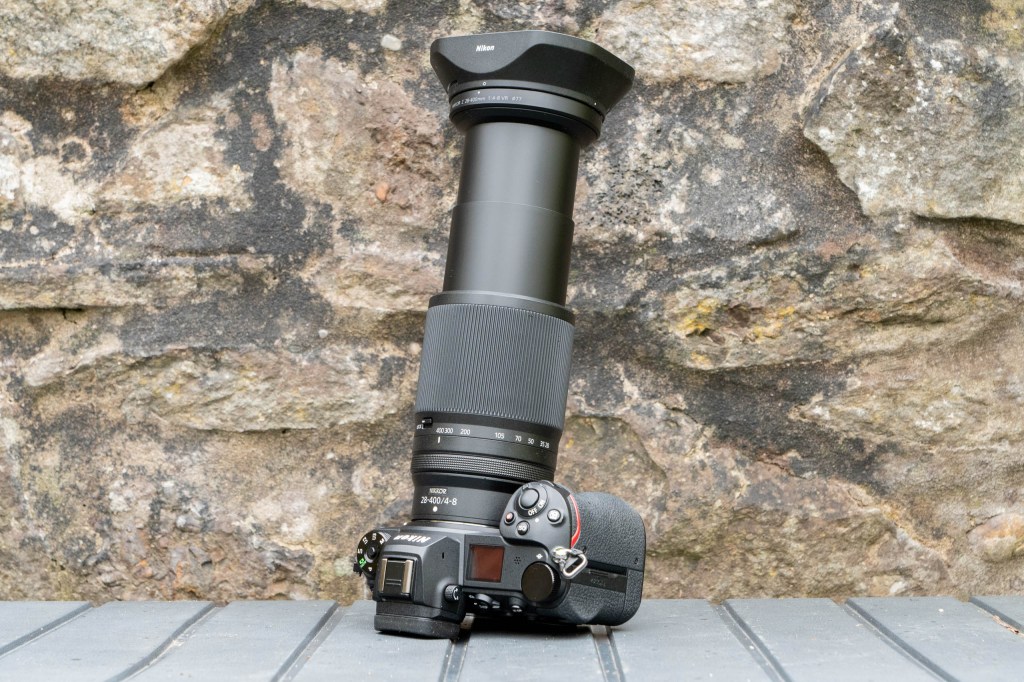Amateur Photographer verdict
A solid all-rounder superzoom, especially well performing when paired with a lower-resolution camera. Produces good image quality, although it’s versatility comes at the cost of overall sharpness.- Huge 14.2x zoom range
- Lightweight for a 400mm lens
- Good value
- Relatively small aperture
- Max aperture drops quickly on zooming
- Focusing isn’t super fast
Announced in March 2024, the Nikkor Z 28-400mm f/4-8 VR is designed as a versatile superzoom lens that can, theoretically, never leave your camera yet cover every subject. This versatility means that it promises to be one of the best Z-mount lenses for Nikon‘s mirrorless range.
Nikon Nikkor Z 28-400mm f/4-8 VR – At a glance:
- Price: $1,299/£1,399
- Nikon Z mount
- Aperture: f/4-8
- Min focus: 0.2m (28mm position) – 1.2m (400mm position)
- 77mm filter thread
- 84.5mm diameter, 141.5mm length, 725g
- Nikon.co.uk
Giving you a 14.2x zoom, subjects as diverse as landscapes, portraits, macro, sports and wildlife are all potentials with a lens like this, as well as it being a good choice for situations such as travel or day trips when you’re trying to keep your kit bag as light as possible.
It’s also potentially a good option for those looking to keep to a relatively tight budget but want to shoot distant subjects. Up until now the options for shooting with such a long lens for the Z series have been to use either the hefty Nikkor Z 180-600mm f/5.6-6.3 VR (£1799)or the Nikkor Z 100-400mm f/4.5-5.6 VR S, a fantastic lens but with an asking price of £2,599. Alternatively, there are expensive prime lenses such as the Nikkor Z 400mm f/4.5 VR S (£3,079), or even more high cost optics such as the Nikkor Z 400mm f/2.8 TC VR S (£13,499) too.
Coming in at £1,399 instead, the Nikkor Z 28-400mm offers a much more affordable route into this kind of shooting, as well as being much lighter and more travel friendly – but of course there are compromises to be had to make the cost and space savings, which may or may not be something you’re willing to put up with.

This is a lens which is designed to be used with Nikon’s full-frame Z models, including the Nikon Z7 II, Nikon Z6 II or Nikon Z5. More expensive / professional level models such as the Nikon Z9 or Nikon Z8 are of course compatible with it too, but it’s not really a lens targeted towards the typical user of those cameras.

It’s also possible to use the lens with Nikon’s APS-C Z models, such as the Nikon Z50 and the Nikon Zfc. With these models, you’ll be left with an equivalent focal length of 42 – 600mm, which might make it particularly appealing to wildlife photographers who aren’t worried so much about having a wide-angle at the shorter end of the lens. There is also a Nikkor DX 18-140mm f/3.5-6.3 VR lens for DX users, with an equivalent focal length of 27-210mm, too.
At the time of writing, there are still no third-party superzoom lenses available for the Z mount. There isn’t much in the way of competition for the 28-400mm, even in different, non-compatible mounts. There is an Olympus 12-200mm f/3.5-6.3 for Micro Four Thirds, and some older DSLR lenses, but nothing specifically for full-frame mirrorless models.
Nikon Nikkor Z 28-400mm f/4-8 VR – Features
The lens construction of the Nikkor Z 28-400mm f/4-8 VR consists of 21 elements in 15 groups, to include 4 ED elements and 3 aspherical elements. These elements should combat fringing, distortion and aberrations. The lens is weather-sealed, but there doesn’t appear to be any special coatings to repel dirt and water – but that’s not surprising for a lens of this price and specification.
Nine aperture blades are included for creating out of focus areas. Bokeh is more evident when shooting at long focal lengths. It isn’t designated as a specific macro lens, but it’s well-suited to macro-type subjects such as flowers due to its close-focusing specifications and maximum reproduction.
The close-focusing distance depends on position of the lens. At 28mm, it can focus as close as 0.2m, rising up to 1.2m at the 400mm end of the lens. Bearing in mind that this length is measured from the sensor, not the end of the lens, it means you can be almost touching a subject and it will still focus at the 28mm end. At the 400mm end, the 1.2m distance means the subject will almost certainly be filling the frame. The maximum reproduction ratio is 0.35x, again at the 28mm end of the lens.
A stepping motor is used for autofocusing, which promises to be quick, but perhaps equally as importantly for video, near-silent too. The VR in the lens name indicates that it has inbuilt vibration reduction. That’s particularly important for shooting at long focal lengths, especially if you intend to use it with any of the Z models which don’t have inbuilt image stabilisation (which is only the APS-C models). Five stops of compensation are promised, or 5.5 stops if you mount the lens on a camera with Synchro VR capability (Nikon Z9, Z8, Zf).
It’s worth remembering that you can also use DX mode on full-frame models to effectively extend the reach of this lens even further. With DX mode activated you’ll get 42-600mm, with that 600mm being potentially even more useful for distant wildlife subjects. However, you also need to be mindful of the camera you’re using it with – if it’s a high-resolution model such as the Nikon Z7II, you’ll end up with a very usable 19.5MP file, but for lower resolution cameras such as the Z6 II, the output will drop to 10.3MP which although fine for social sharing could be less favourable for printing.
Nikon Nikkor Z 28-400mm f/4-8 VR – Build and Handling
Despite being marketed as being lightweight and small, I was still surprised by exactly how small the 28-400mm is when I took it out of the box. It’s certainly something that I feel comfortable carrying around for day trips and holidays without having to see a chiropractor afterwards, and it’s also comfortable for handheld shooting.
It measures up at 141.5mm in length (84.5mm diameter), and weighs 725g. To have a 28-400mm full-frame zoom lens in something of this size is quite an impressive feat, even if it does come at the expense of wide apertures. Of course, that’s not to say that the lens is inherently small, but it still balances well with models such s the Z6 II and the Z7 II. It would perhaps make APS-C model such as the Zfc feel a little unbalanced – particularly at the 400mm end.
When the full length of the zoom is extended, it is of course a much bigger lens, but on the whole still balances quite well if you use your second hand to steady it.
The outward design of the lens is relatively straightforward. A lock to stop the lens from extending by itself when being carried around is useful – otherwise you will likely find it’s zoomed out independently. There are no other buttons or switches to be found here, so functions such as switching between manual and autofocus will need to be controlled from the camera body.
There is however a small ring near the mount end of the lens, which can be customised to control a few functions, including aperture, exposure compensation and manual focus. It’s also possible to set the dial to do nothing at all – which if you’re prone to knocking it out of place is worth remembering.
Much of the bulk of the lens is taken up by the zoom mechanism, as you’d expect. Focal lengths of 28, 35, 50, 70, 105, 200, 300 and 400mm are marked on the lens barrel. The zoom ring has just the right amount of give to make small increments easy, without being so stiff as to be difficult to operate.
The lens can be used with 77mm filters. A lens hood (HB-114) is included in the box, which can be reversed when storing or transporting the lens to save space.
Nikon Nikkor Z 28-400mm f/4-8 VR – Autofocus
I’ve been using the lens with the Nikon Z7 II and on the whole, focusing has been quick and quiet. Occasionally it pauses with low contrast subjects, or when the light is low, but I’ve never seen a false confirmation of focus.

Sometimes when moving between a close subject and a distant subject between shots it can take a little longer to lock onto focus than perhaps might be ideal, particularly for fast-moving subjects, but for the price and specification of the lens it’s still reasonably good.
It’s also very quiet – you can just about hear it focusing if you hold the camera next to your ear in a quiet room, but it doesn’t show up on most videos, and certainly shouldn’t disturb situations such as weddings or wildlife. It would be a good choice for travel vloggers who are keen to cross off a number of different subjects without carrying lots of lenses around with them.
Nikon Nikkor Z 28-400mm f/4-8 VR – Performance
This is not a lens to buy for ultimate sharpness, but it still performs fairly well if you look at pictures at normal printing sizes and don’t obsess too much about pixel peeping.
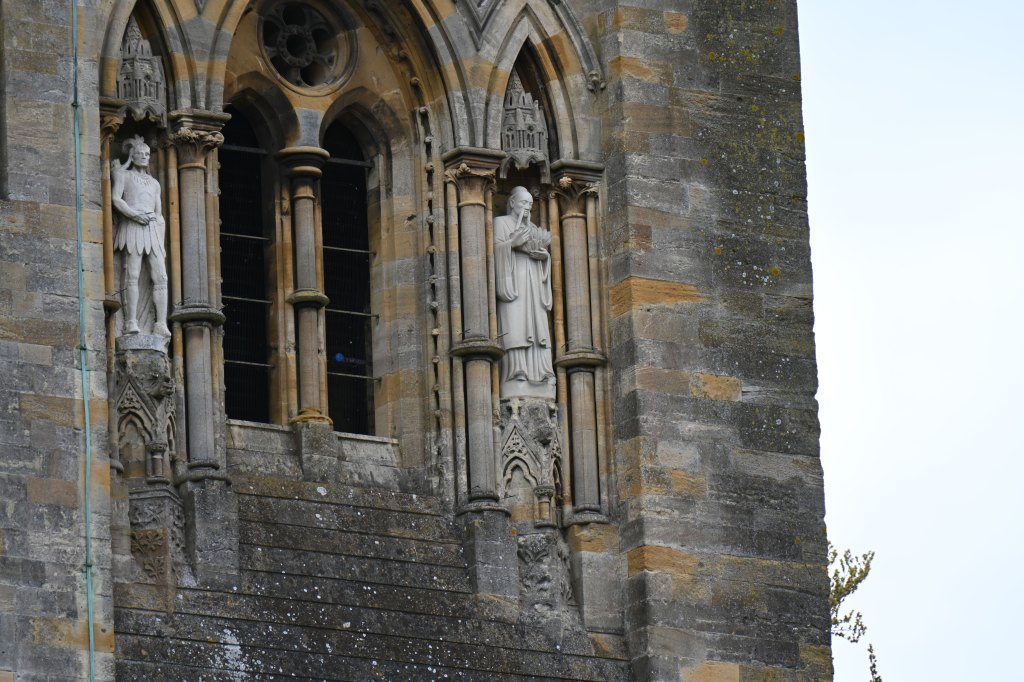
You’ll likely see the softest results at the furthest reach of the telephoto, but only if you’re zooming into 100% and really seeking out softness. The overall impression is certainly good enough considering the versatility of shooting subjects and space/cost saving the lens offers.

In a similar vein, the relatively narrow aperture might lead you to assume that creating shallow depth of field effects is difficult. However, if you shoot at mid to long focal lengths, you’ll find that a blurred background is easily achieved and in fact yields some attractively soft results.

Another potential problem with the narrow aperture comes if you tend to shoot in low light. Although this lens starts at f/4, by the time you reach 50mm, it’s dropped down to f/5.6, gets to f/6.3 by 100mm and f/8 from 200mm onwards. This can mean in poor lighting conditions you have to shoot at a higher ISO than you might like. If you’re generally using it in bright conditions – such as for travel – then that’s not going to be a big problem, but where visibility is compromised, such as with some nature shoots, it’s something to bear in mind.

Barrel or pincushion distortion isn’t immediately obvious, as like other manufacturers, Nikon corrects for in software. There is some very slight vignetting when shooting in some conditions at f/4 at 28mm, but it’s not distracting and can be easily removed in post-production if you don’t like it.
Chromatic aberrations don’t show up particularly often, even when shooting in relatively high-contrast situations and zooming right into the scene to find them.
Nikon Nikkor Z 28-400mm f/4-8 VR – Our Verdict
If you want to shoot at long focal lengths, you either need to be prepared to spend a huge chunk of change, or, you have to be prepared to accept compromises.
At £1399, this lens falls into the latter camp. It gives you huge scope to shoot a wide range of subjects – and on the whole it does that fairly well – but it’ll never produce the sharpest or best shots that your camera is likely capable of.
It’s ideal to pair with lower-cost, lower-resolution cameras such as the Nikon Z6 II or the Nikon Z5, and it makes a great travel optic for those that don’t want to lug around a whole kit bag worth of stuff, but still want the option to photograph an array of different subjects.
This is the second superzoom lens we’ve seen from Nikon. You’ll opt for this one if you crave the extra length it gives you – so it’ll probably be most appealing for wildlife photographers, but perhaps you’ll go for the 24-200mm if you’d prefer to keep things even lighter and have a slightly wider aperture at 200mm (f/6.3 vs f/8 for the 28-400mm), as well as having a slightly wider angle at the wide-end.

You’ll also need to be prepared to spend more to get the 28-400mm compared to the 24-200mm, especially considering the latter lens has been on the market a bit longer. At the time of writing, the 24-200mm costs around £950, while the 28-400mm is priced at £1399 – that’s a fairly hefty amount extra for a bigger zoom, but if it’s what you need then it just might be worth it.
Overall, the best thing about this lens is its versatility. The images it produces are very good, and although they’re not superb, for the reach you get then it likely opens up subjects that might not have ordinarily been within the average photographer’s budget. A great all-rounder that comes recommended.

Follow AP on Facebook, Twitter, Instagram, YouTube and TikTok.
Nikon Nikkor Z 28-400mm f/4-8 VR – Full Specifications
| Price: | $1299 / £1,399 |
| Filter diameter: | 77mm |
| Lens elements: | 21 |
| Groups: | 15 |
| Diaphragm blades: | 9 |
| Aperture: | f/4-f/8 (maximum) – f/22-f/45 (minimum) |
| Minimum focus: | 0.2-1.2mm |
| Length: | 141.5mm |
| Diameter: | 84.5mm |
| Weight: | 725g |
| Lens Mount: | Nikon Z |
| Included accessories: | caps, hood |
Related reading:
- Nikon’s Nikkor Z 600mm f/6.3 VR S Lens will set you back 5-grand
- New Nikon Z 135mm f/1.8 Plena premium portrait lens
- Lightweight Nikon Z 70-180mm f/2.8 released

